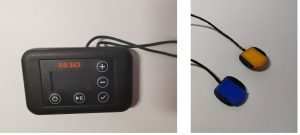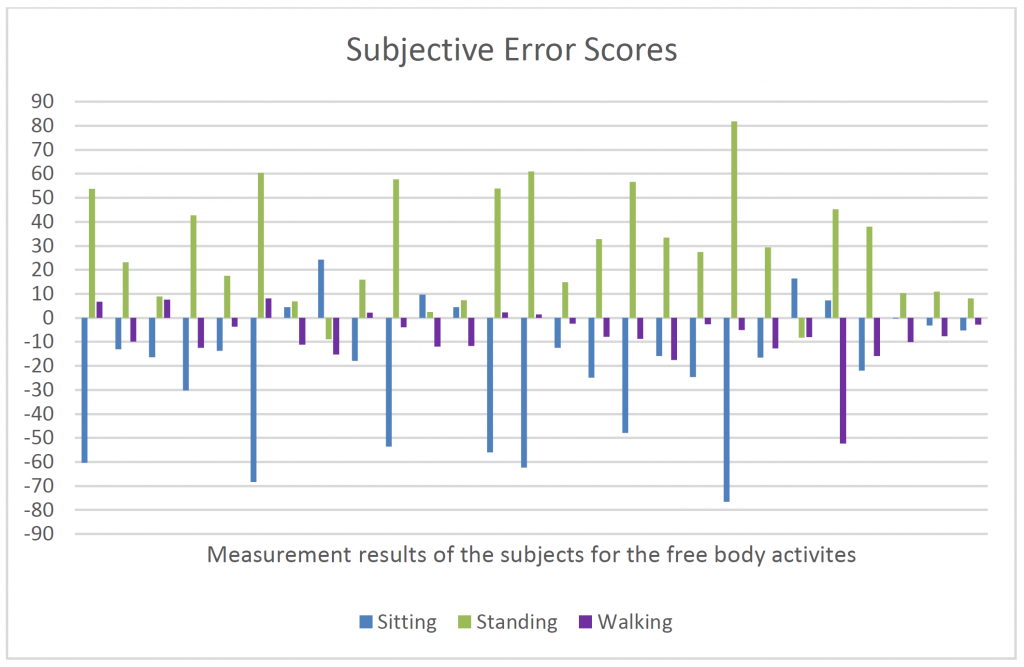Sensor-based versus perceived measurements of posture in predominantly sedentary office workers
Aim and Research Question(s)
The aim of this thesis was to determine how office workers perceive their own body activity during a working day. For this purpose, a sensor measurement is compared with the subjective assessment of the participants.
Background
There is currently a great interest in the topic of back health, as more and more time is spent sitting. [1] This results in sick people who cause high costs for the national economy. At the same time, the use of modern technologies such as apps and sensors in healthcare is becoming increasingly attractive. It has already been recognised that technical aids have great potential for health promotion. [2]
Methods
The thesis included a literature research about the state of research in measuring sedentary behaviour, effects of prolonged sitting and interventions for back health. The study population (n=27, m=16, f=11) was measured using the Viva Back sensor system and then a questionnaire adapted by OSPAQ [3,4,5] was completed. To compare the results, a Spearman's rank correlation and a Wilcoxon Signed Rank test were performed. To check for systematic bias a Bland-Altman analyses was performed.
 Figure 1 and 2: Viva Back measuring device and sensors
Figure 1 and 2: Viva Back measuring device and sensors
Results and Discussion
Self-assessment of time spent sitting compared to objective measurement shows a positive, weak, non-significant correlation (r = 0.199; p = 0.319; n = 27). A negative, weak, non-significant correlation was found for time spent standing (r = -0.046; p = 0.819; n = 27). For time spent walking, there is a positive, medium, significant correlation (r = 0.448; p = 0.019; n = 27). The measurements in sitting differ significantly from each other (asymptotic Wilcoxon test z = -3.363; p = <0.001; n = 27). In other studies, subjects tended to underestimate sitting time - in this study, the majority overestimated sitting time. [6,7]  Figure 3: Error of subjective assessment - over the entire measurement period with the objective measurement (VivaBack) set at zero and the error shown as the difference between the objective and subjective assessments.
Figure 3: Error of subjective assessment - over the entire measurement period with the objective measurement (VivaBack) set at zero and the error shown as the difference between the objective and subjective assessments.
Conclusion
The participants in the study are not able to assess themselves correctly in terms of body activity during a work day. There should be more focus on back health to create more awareness.
References
[1] Wallmann-Sperlich et al. BMC Public Health, 14:1259, 2014. [2] Rodriguez et al. IEEE, 70:1-10, 2021 [3] Jancey et al. BMC Public Health, 14:762, 2014. [4] Maes et al. BMC Public Health, 20:1072, 2020. [5] Pedersen et al. BMC Public Health, 16:836, 2016. [6] Urda et al. Prev. Med. Rep., 8:163-168, 2017. [7] Gupta et al. BMJ Open, 7:e013251, 2017.
